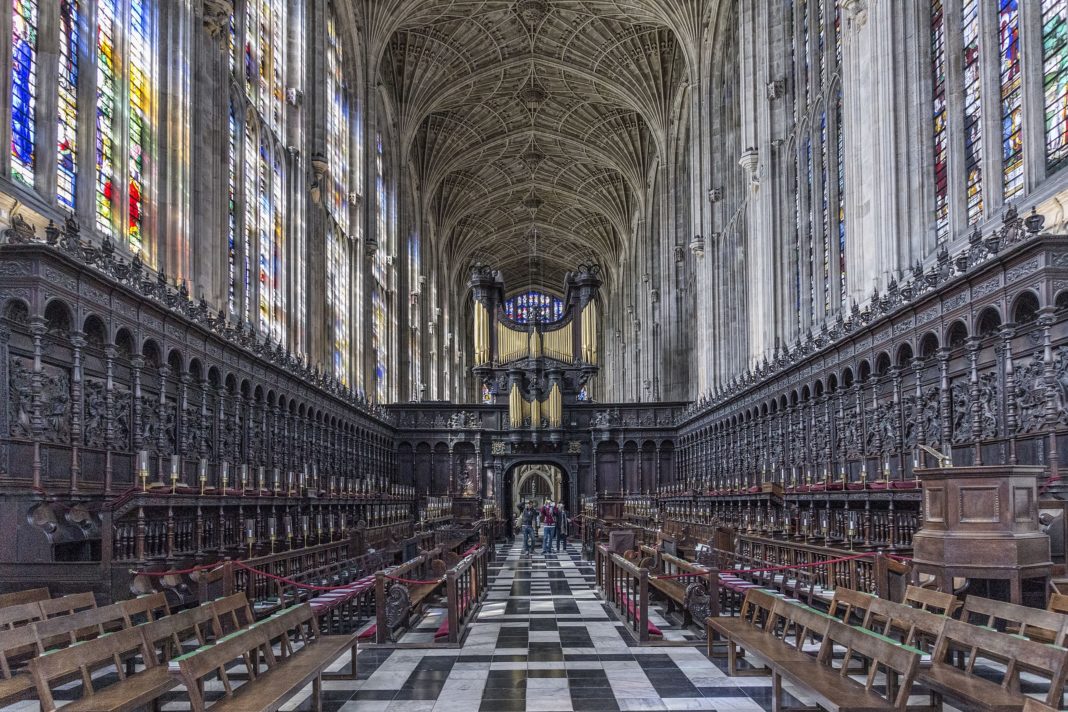King’s College Chapel is the chapel of King’s College at the University of Cambridge. It is considered one of the finest examples of late Perpendicular Gothic English architecture and features the world’s largest fan vault.
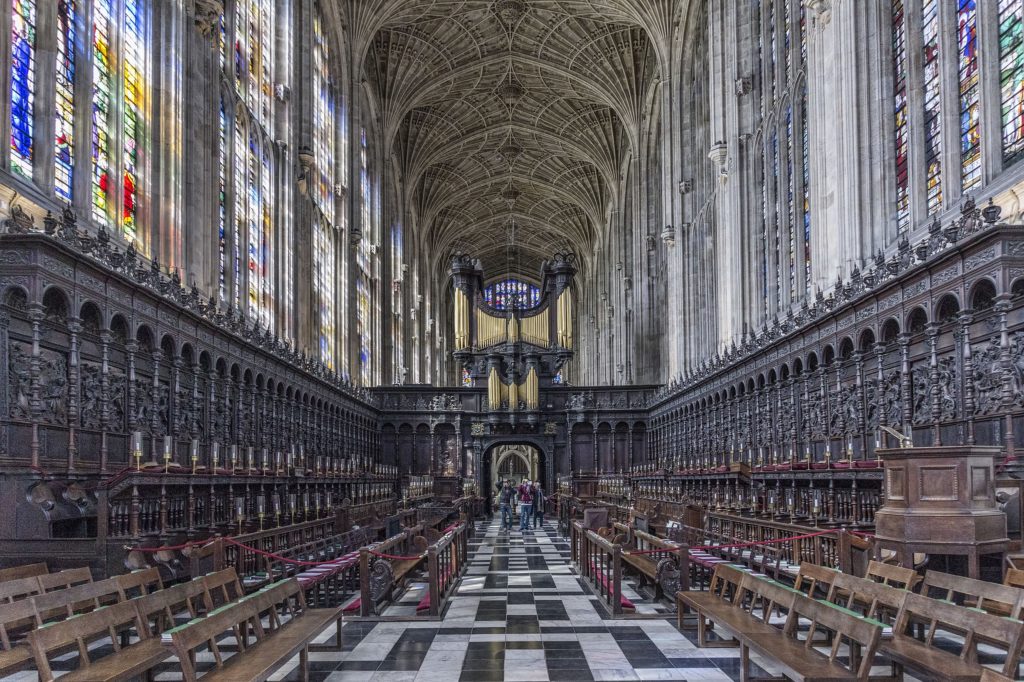
A fan vault is a form of vault used in the Gothic style, in which the ribs are all of the same curve and spaced equidistantly, in a manner resembling a fan. The initiation and propagation of this design element are strongly associated with England.
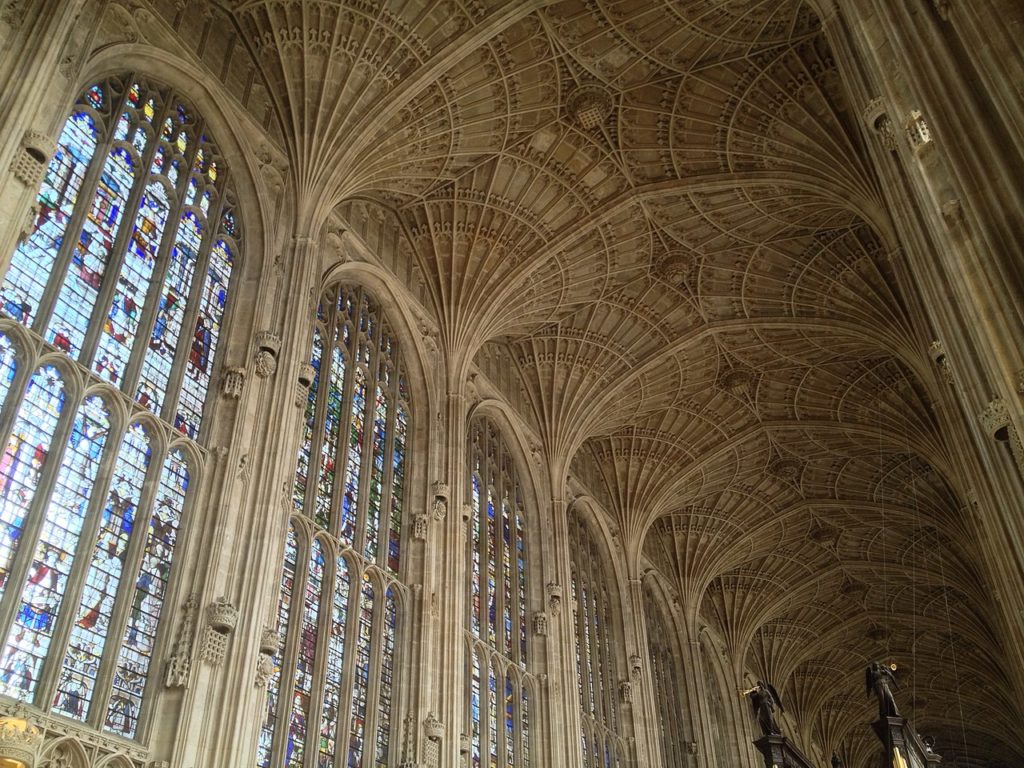
The ribs of a fan vault are of equal curvature and rotated at equal distances around a central (vertical) axis, forming the conoid shape which gives rise to the name. In between sequences of conoids, flat central spandrels fill the space. According to Leedy (1980), the fan vault was developed in England (as opposed to France and other centers of Gothic architecture) due to the manner in which English rib vaults were normally constructed. In an English rib vault, the courses are laid perpendicular to the rib while in France they are laid perpendicular to the wall.
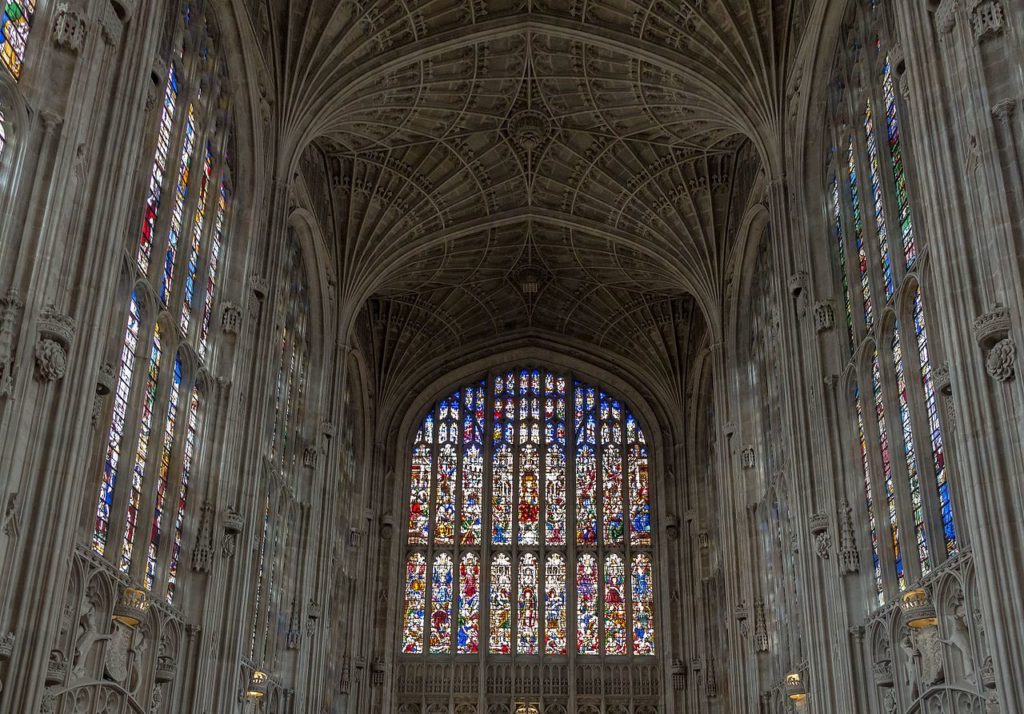
The Chapel was built in phases by a succession of kings of England from 1446 to 1515, a period which spanned the Wars of the Roses and three subsequent decades. The Chapel’s large stained glass windows were completed by 1531, and its early Renaissance rood screen was erected in 1532–36. The Chapel is an active house of worship and home of the King’s College Choir. It is a landmark and a commonly used symbol of the city of Cambridge.
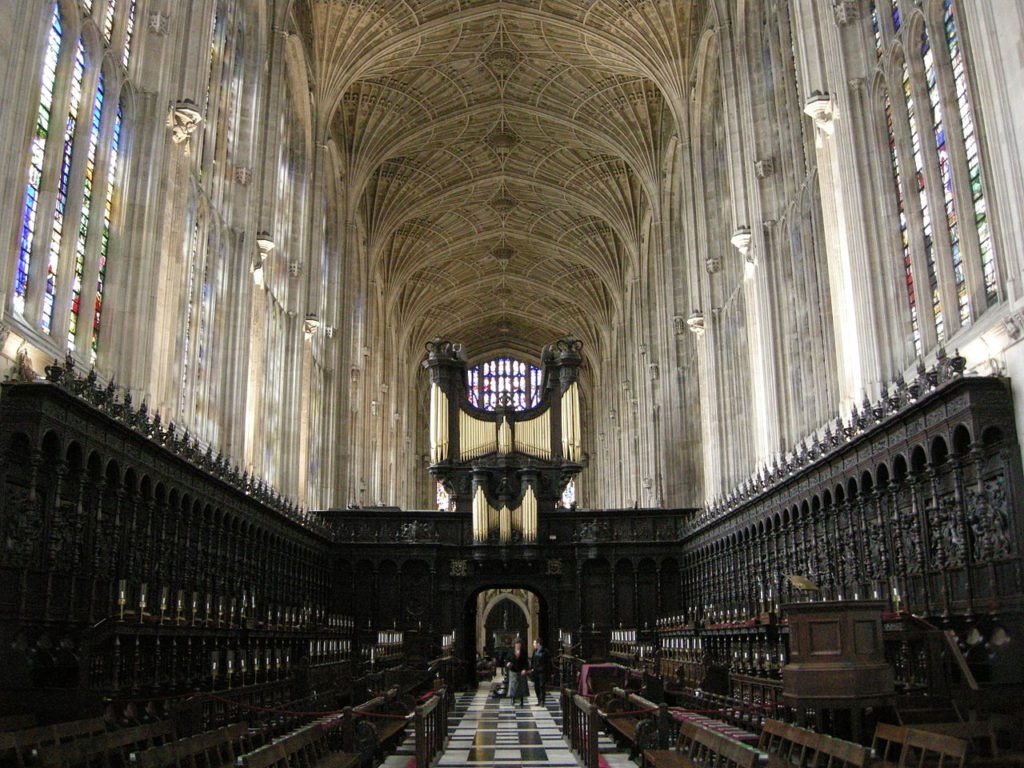
According to the Internet





